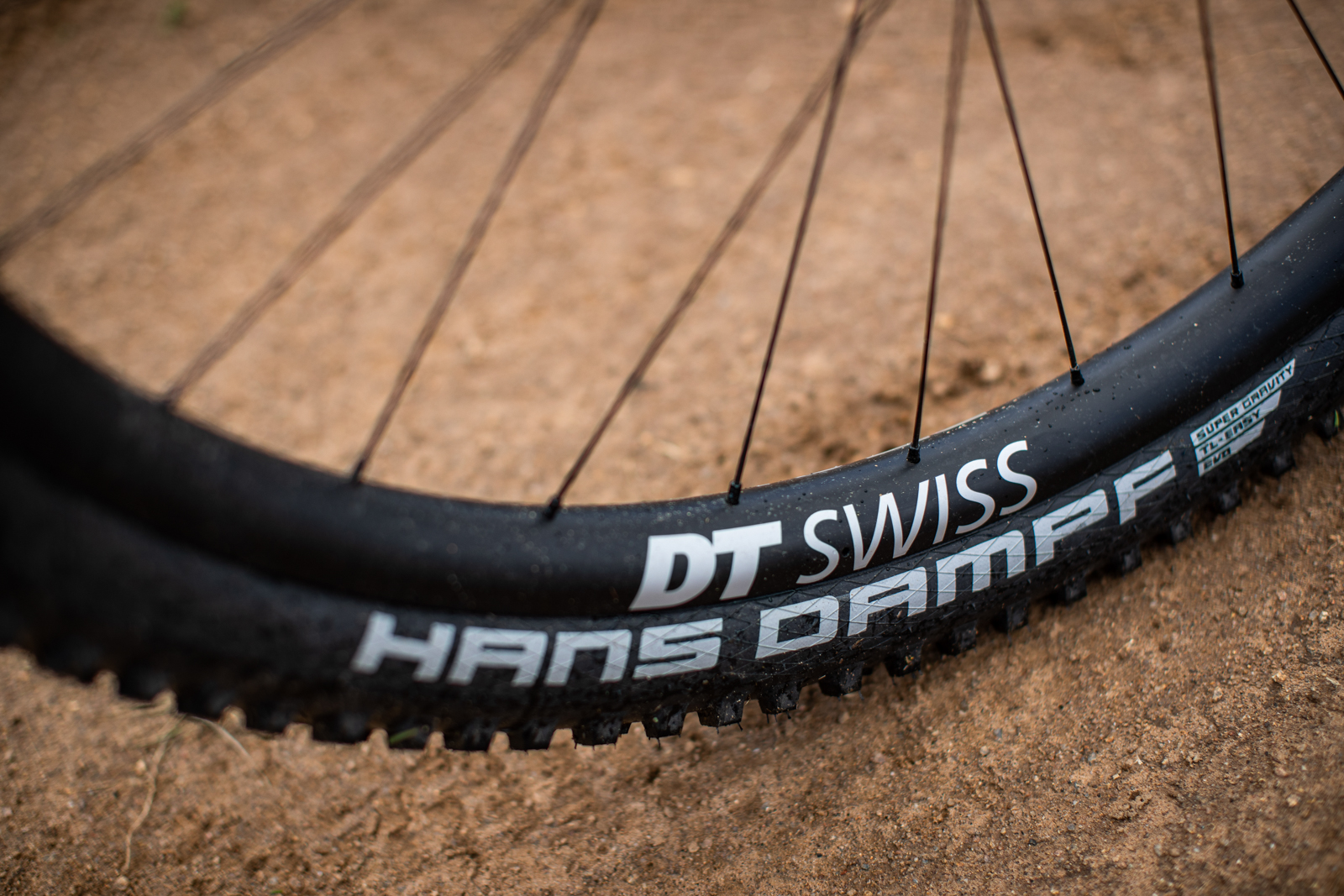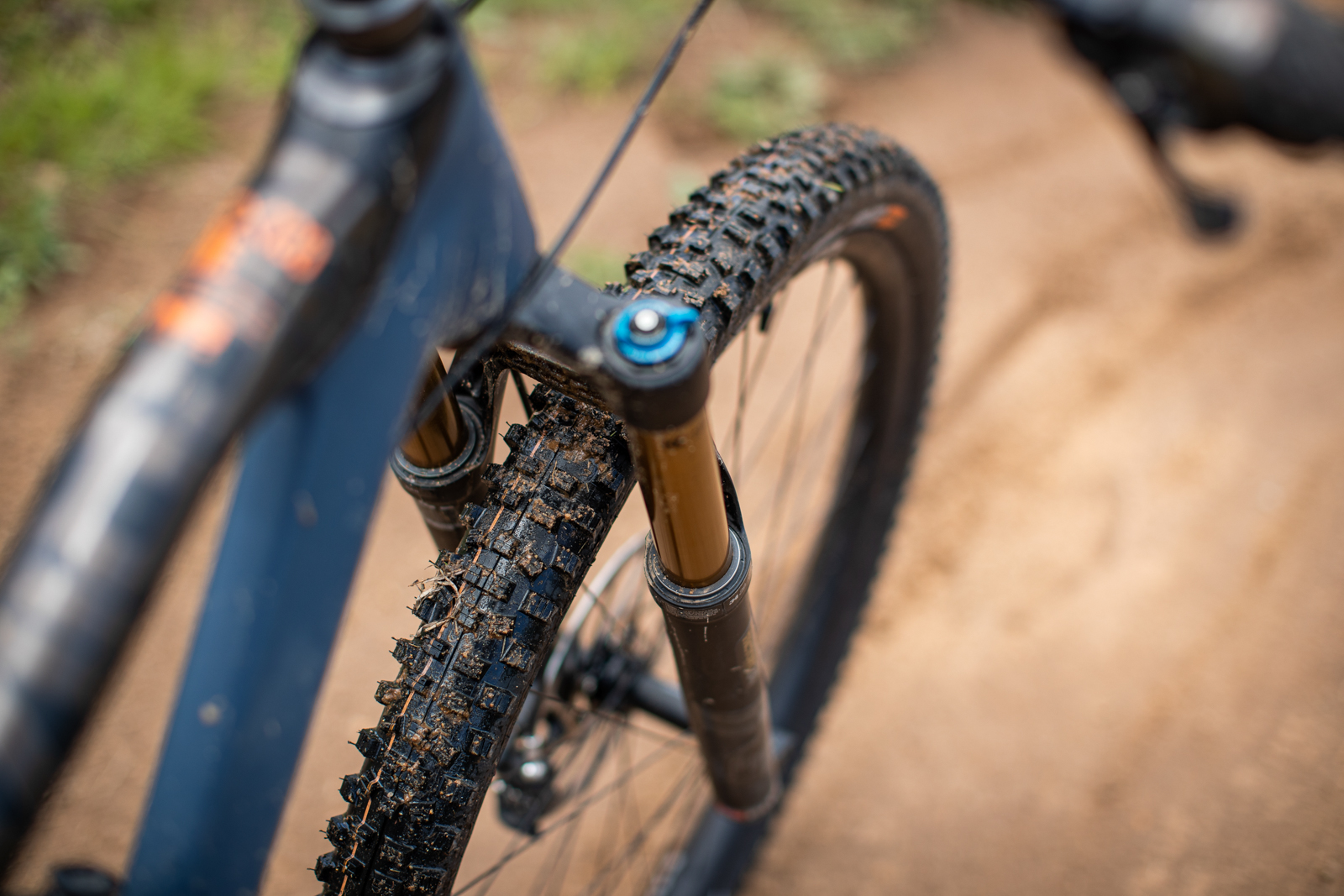TESTED: Schwalbe Decade of Super Tyres
Schwalbe's Decade of Super Tyres aim to make tread, compound, and casing easier to understand. We put them to the test with a couple of solid months riding!
Words: Will Shaw
Photos: Tim Barsdley-Smith
In 2020, Schwalbe overhauled their tyre range with an all-new range of tyre casings. The 5 casings range from downhill specific tyres through to lightweight XC race rubber. The introduction of the ‘Super’ moniker aims to make it easier to pick through the jargon when you’re selecting what tyre is right for you. The five super casings ranging from lightest to heaviest are Super Race, Super Ground, Super Trail, Super Gravity, and Super Downhill.

Aside from Super Ground and Super Trail casings, which I think could be confused, the rest of these names make total sense. I appreciate Schwalbe’s effort to provide a simple naming system in the often-confusing world of tyres. Once you decide how much casing stiffness and puncture protection you need for your riding style and terrain, Schwalbe’s compounds are similarly well named, from Addix Speed through to Addix Ultra-Soft.
For this test I was decking out my NS Define 130 1 with fresh rubber to take on our NSW Snowy Mountains road trip. We rode a huge range of locations and trails over our weeklong trip, so versatile tyres were a must. I opted for a Hans Dampf in the Super Gravity casing, with the Addix Soft compound up front in the 2.35” size. This was paired with a Super Trail Nobby Nic in the rear, also in the 2.35” width, but in the Addix Speedgrip compound.

I could’ve gone for a 2.6” tyre on the front, but Schwalbe traditionally run a touch fatter than their printed size, so I felt that the 2.35” front and rear would provide a good balance of traction, support, and rolling resistance. The tyres were mounted to DT Swiss EXC1501 wheels, which have a 30mm internal width.
I also received the revamped and rear specific Big Betty, in a 2.4” size with the Super Trail casing in the Addix Soft compound. The nods to rolling resistance and braking traction are comparable in some ways to a Maxxis DHR II, which is one of my favourite tyres. Super Trail is the lightest casing Schwalbe do for the Big Betty, which indicates its aggressive intent.

On the trail
This was my first experience on the redesigned Nobby Nic, and there’s a lot to like about the refinements Schwalbe have made with this tyre. The design is far more aggressive than the previous generation, and the shoulder knobs have been significantly beefed up. One of my criticisms of the old Nobby Nic was its tendency to let go at critical moments, but I experienced none of the nerviness I was used to on a Nic transitioning from centre to cornering knobs on the new model.

Braking traction is also improved, and it doesn’t feel like Schwalbe have sacrificed much rolling speed to achieve the increased confidence when it matters. The Speedgrip compound offers enough bite that I wasn’t left wanting something tackier every ride, and the wear rate is impressive. Compared to the wear rate on the soft compound Hans Dampf when I ran it on the rear, the difference is noticeable.
The Hans Dampf isn’t a tyre I’d spent much time on prior to this test. Alongside the Nobby Nic, the Hans Dampf is a staple in the Schwalbe range that services everyone from trail riders to enduro racers, and as a result it’s a tyre offered in multiple casing and compound variants.

The Hans Dampf is the more aggressive sibling to the Nobby Nic, and the more open tread pattern and beefier cornering knobs are noticeable from the get-go. I was coming off a Magic Mary into the test, and the Hans Dampf didn’t feel like a big step down in terms of braking and cornering traction until the trails started getting really loose and really fast. Where the Hans Dampf has one over the Magic Mary is rolling resistance. Despite having the tyre in the Super Gravity casing and Addix Soft compound, the Hans Dampf rolled noticeably faster compared to the Magic Mary I was running prior to this test on the same bike.
The other area that the Hans Dampf surprised me in was wet or loose conditions. There’s enough spacing between the knobs that the tyre sheds surprisingly well, meaning you could run a Hans Dampf almost year-round in Australia depending on where you live. Another option I would consider is running the Hans Dampf in these specifications on the rear of my enduro bike in dry to medium conditions. The combination of cornering and braking grip, as well as rolling resistance is impressive. Despite using the Addix Soft compound, the wear rate on the Hans Dampf wasn’t excessive compared to other brand’s soft compound offerings.

Another tick in the Hans Dampf box is its bi-directional nature. When the tyre is looking a bit ragged you can flip it over and hook into some new lug edges.
The Big Betty was the last tyre on test. The Big Betty has been designed specifically as a rear tyre with a Magic Mary on the front. It actually uses the same cornering knobs as the Mary, but tighter spaced and ramped centre knobs to get the rolling speed up.
Whilst it doesn’t edge out a Minion DHR II in my book for overall rear tyre performance, the Big Betty is an impressive rear specific option for enduro and gravity riders. It rolls a fair bit faster than a Mary on the rear, and none of the conditions I rode in were loose or wet enough to give the braking traction any issues. If I was racing enduro in anything up to very loose or wet conditions, a Mary up front with a Betty on the rear, both in the Super Gravity Casings and Addix Soft compounds would be a great combination.
After testing all three tyres in two different Super casings, I had a good gauge on the difference between Super Trail and Super Gravity. Despite this, it’s always a hard one to give general recommendations without knowing the specific circumstances of the rider.
I was impressed by the Super Trail casings on both the Nobby Nic and Big Betty, and if I was riding a 120-140mm bike on mainly undulating terrain it’d be my choice of casing. If your bike has over 140mm of travel and puncture protection and braking traction are your priorities, go for the Super Gravity casing. If you’re really pushing things, or you like gravity riding without inserts, the Super Downhill casing could be worth a try, particularly on the rear. I had one flat on the Nobby Nic, however this occurred on a pure downhill trail and it was from a sharp rock piercing the top of the tyre.

There were some occasions on the Big Betty when I was pushing hard into turns and I could feel some squirm (using a Huck Norris insert and 27psi), and when I ran the Hans Dampf through the same turns at 26psi the difference in casing stiffness was noticeable.
On the compound side of things, I was impressed by the Speedgrip’s combination of rolling speed, braking traction, and wear rate. My recommendations above would stand for choosing between the Speedgrip and Soft compounds, depending on which side of gravity bias your riding falls into. Unless your trails are very predictable, or rolling speed is your top priority I’d always tend towards a softer compound on the front.

All three tyres retail for between $109 to $119. Whilst they’re definitely in the premium price range, they deliver on what they promise, and the new casing and compound ranges should make it far simpler to pick your perfect set of tyres.
RRP: $109-119
From: www.bikebox.com.au
Hits:
- Easy to understand tyre casing options
- Choose the right mix of performance, protection, speed and stability
- Great wear rates
Misses:
- Super Ground and Super Trail casings are a bit confusing














